Muscles Are Still Weak: Mental Sending Tips, Part 2
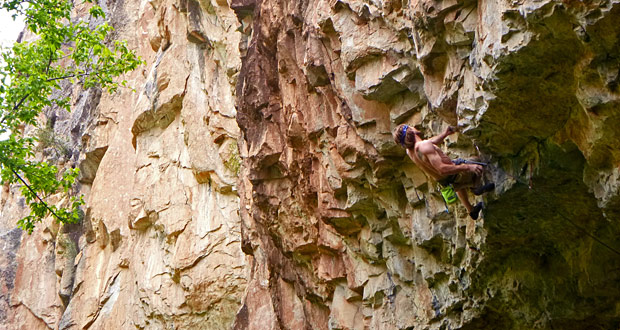
The author sends Families are Forever, an obscure 5.12d in Rifle Mountain Park. Photo by Mike Humphries.
Learning to climb a route that is at the edge of your abilities or beyond is a huge mental game. A lot of your potential success depends on how you approach the challenge.
If you’re like me, a typical climbing season goes like this: I take a short rest at the end of the previous season (more because the holidays get in the way of training than because I need the rest, but I do need the rest, so it works out). Right after Christmas I start home workout routines, such as hangboarding and core workouts, and bouldering at the gym. All the while, I picture myself blasting through the next levels once spring rolls around. I feel my strength gathering like a pre-erupted Mount Saint Helens. I know I’m going to float up the rock when I come back, and often, when the rock dries out, it seems I do start off with a bang.
Then, right around July, I start to get a little impatient and frustrated with my progress. My momentum slows down like a cyclist digging into a long hill, who has to drop down into his granny gear to keep going.
The crux of every season for me is being able to maintain a positive mindset through months of accumulating failure and injuries. In any sport, it’s often the end game that separates the winners from the rest of the pack, and the end of a climbing season is no different. With the right approach, outlook and strategy, you too may be rewarded with the biggest successes at the end of the season, when all your acquired strength and skills come together in that perfect moment.
This spring in Colorado has been depressingly wet. I for one haven’t climbed any rock in weeks. However, let’s not forget that it’s the fall season that most of us are really training for!
Below are some more tips from Steve Damboise and Heather Weidner about what it takes to realize your biggest goals. I introduced Damboise and Mrs. Weidner in a previous blog here. To recap, though, you can take my word for it that Damboise has been crushing Rifle’s hardest routes for 20 years as a weekend warrior from Boulder, and Heather is a 5.14 climber who hardly needs an introduction these days, as she is featured in a new video for Outside Television by Celin Serbo that is due out this summer.
From Steve Damboise:
• One MUST be PASSIONATE about sending a route in order to do what is required mentally to send it. It becomes a second job, as you think about it and work on it for many hours and days per week.
• Dedication – This can be very time consuming, as it trumps other important things in your life and your family’s life.
• Tenacity – Never give up, no matter how painful or impossible it seems in the moment. Tell yourself you can do it and it will happen in time.
• Narrow it down – It must be one of the most important aspects of your life. You can’t have too many highest-priority items in life and give them all the attention that they need in order to be the best you can be at them.
• First ask yourself questions such as:
1. How long will it take? If a route is too long or hard, and you’re likely to give up, don’t do it.
2. How much money will it cost? If there is too much travel, don’t do it.
3. Do I have a loyal and motivating partner/partners to help motivate?
4. Do I have a good support system (friends to keep you honest and accountable to goal and family to support the time and money it will take to accomplish the goal)?
• Control your negative thoughts. Focus on the positive small accomplishments.
• You must be disciplined and push through the hard times and trainings.
• Train to improve on your weaknesses. Even though this is physical, not mental, the experience to overcome your weaknesses will make you more comfortable and confident that you can achieve that portion of the overall goal.
From Heather Weidner:
• Don’t expect to do all the moves your first try. In my opinion, if you’re doing every move first try it’s probably too easy. Try something harder.
• Patience is key. I like to think of figuring out cruxes like solving a complicated math problem. It takes time. Be smart and creative in order to unlock the sequence.
• Never stop experimenting. It’s common to see climbers execute a move on a route in a way that is super hard for them, but they think that it is the only way. Take your blinders off and be open to other possibilities, particularly if you keep falling in the same spot. Sometimes the difference between sending and not sending is discovering a better foot, an improved way of holding a hold, or other minutia.
• Be kind to yourself. This is the hardest part for me and it is a constant learning process to stay positive. It’s easy to beat yourself up and think you’re not good enough, or that you’ll never accomplish your goal. All of this negativity only hurts you, so try to let it go.
• It’s okay to freak out a little bit. Allow your self to have a release. I’ve cried and cussed and all that wobbler jazz, after repeatedly failing on a route. As climbers we put so much energy and effort into climbing, and that energy needs to transfer in some form. Just try to make it a short outburst and get over it quicker than later so you can be a supportive climbing partner.
• Train your rests. Learning how to rest is just as important as figuring out the cruxes of your climb. Figure out the most efficient way to recover.
• Treat any kind of progress as a successful day. This may mean something as subtle as figuring out better beta or learning a more efficient way to clip. Sending is always the ultimate goal but try not to focus on the outcome.
Derek Franz writes a blog for SplitterChoss.com once a month. To find more of his writing, including “The Open Heart Series,” which details his heart surgery and return to climbing, visit www.derekfranz.com.
Bulldog Creek Dog Walk (IV WI 4+)
Hayden Carpenter and Tom Bohanon recently repeated an obscure ice climb on the south side of Mt Sopris. Given a brief mention in Jack Robert’s ice guide, Bulldog Creek Walk is described as being 100 meters of WI 4. What they found was seven pitches of ice in a remote setting that makes for one […]
Connect with Us





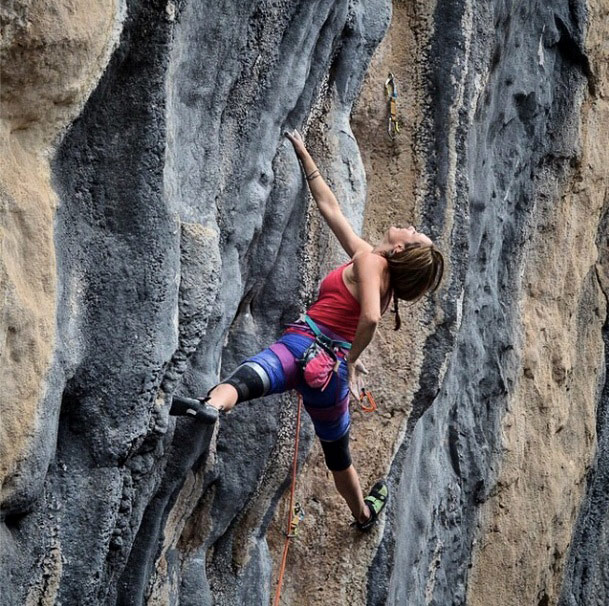



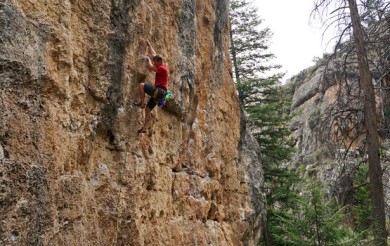
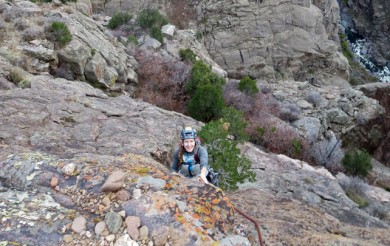
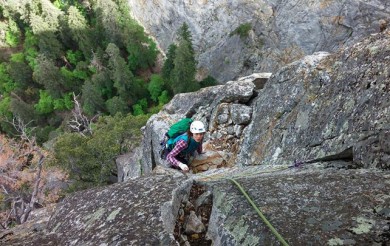
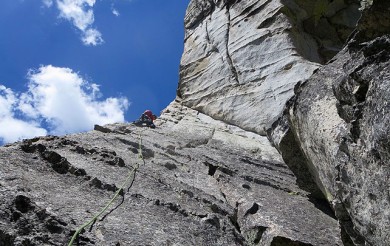



Recent Comments